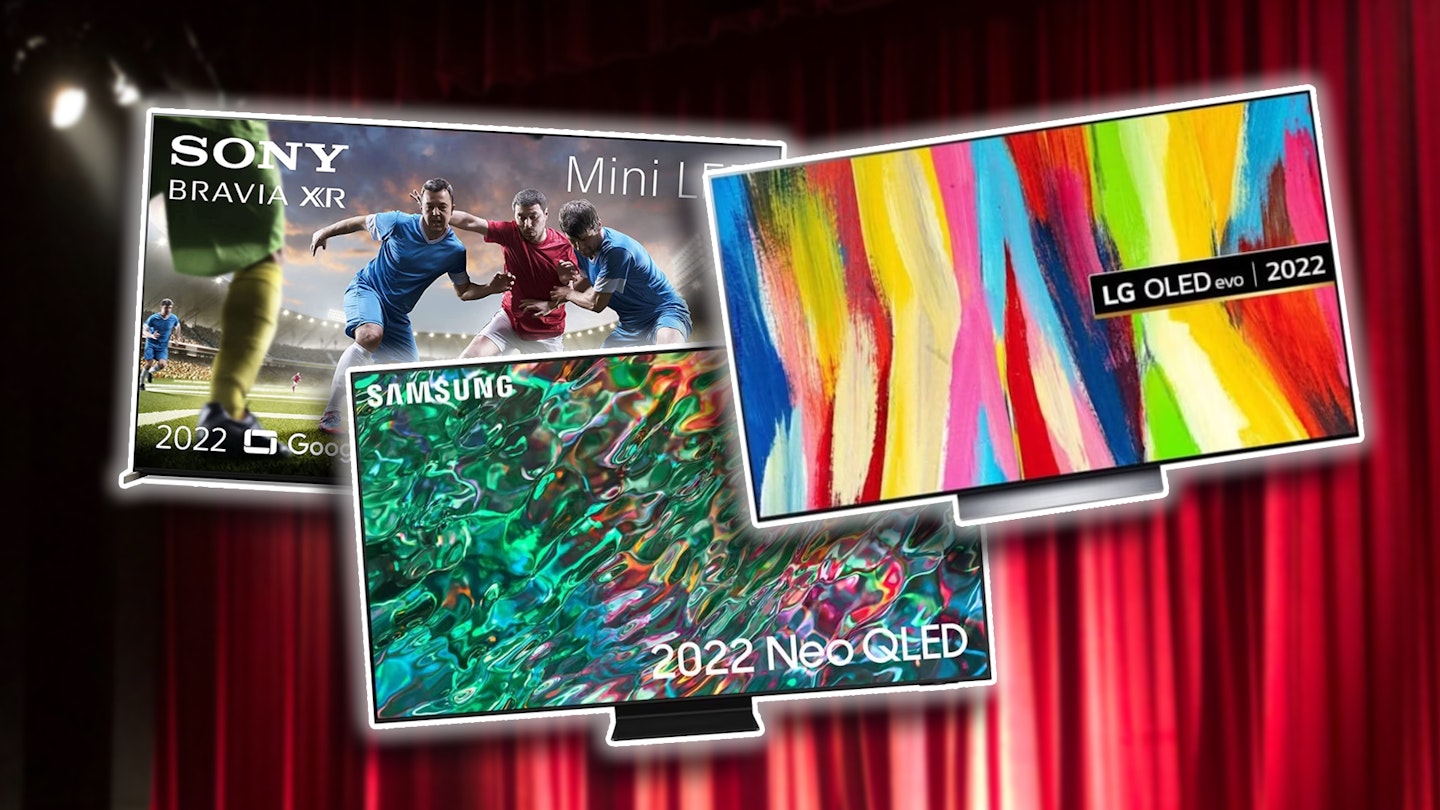Fancy one of the biggest and best 75-inch TVs you'll likely see outside your local cinema? Sometimes there’s nothing better than settling down for a movie night at home with a bowl of popcorn and a great TV. Nothing can beat that experience of powering up a huge screen in your very own room for the first time. You'll never go back once you've witnessed a 4K picture at this scale.
Those who have upgraded their TV will know what it feels like to have all of that extra real estate suddenly. Any screen this large genuinely transforms your viewing, taking immersion to the next level. If you thought that going from a 55-inch TV to a 65-inch TV was a game-changer or buying one as your first TV, you're in for a real thrill.
The best 75-inch TVs of 2024 at a glance:
The larger a screen gets, the more impressive the effect, inch-for-inch. But there's more to this than sheer size and scale. What about all of the different display technologies on the market? What is HDR and refresh rate? And how will these affect my picture? We have a handy guide at the end of the article to cover these issues and more.
Not only have we selected the best 75-inch TVs for you, but we’ve also put them into handy categories to help you choose. Not all brands offer 75-inch sets, but we’ve also included some 77-inch models, so these are approaching the gargantuan 80-inch TV category. Unsurprisingly, they’re all smart TVs as well, so you'll be all set with your favourite apps, on-demand video, and top-quality big-screen entertainment.
Best 75-inch TVs of 2024
Please note: All prices are correct at the time of writing. Prices, stock and deals are subject to change without notice.
Best overall
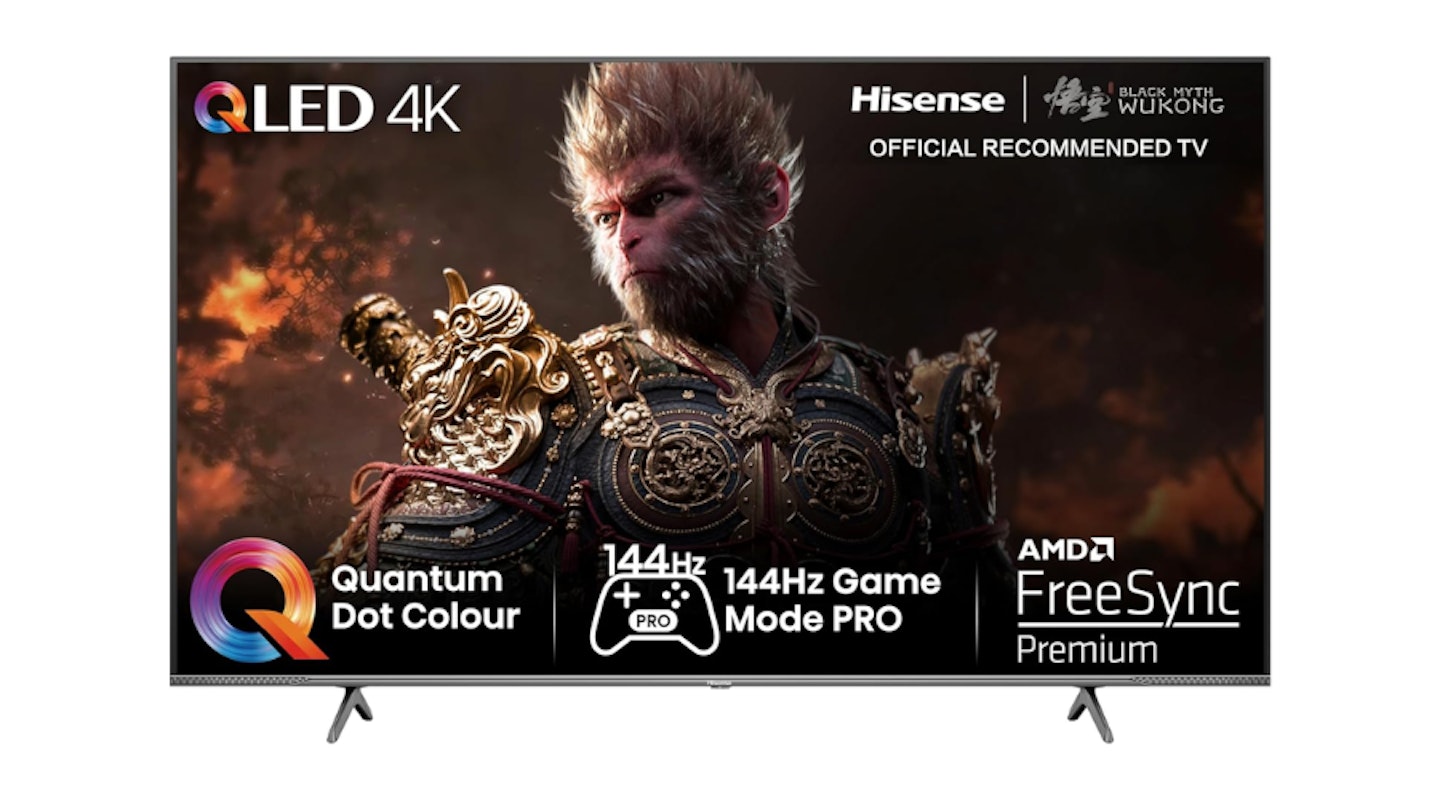 Hisense
Hisense A phenomenal choice for anyone looking for a serious upgrade, Hisense's 75E7KQTUK PRO is a stellar choice for those who especially enjoy gaming, but otherwise a fantastic choice for anyone striving to create a true home cinema. Out of the gate, this Hisense screen has a refresh rate of 144Hz, which is unseen in televisions under £1,000, let alone 75-inch televisions under £1,000.
The overall look of the screen is fantastic, with QLED screen panelling dramatically enhancing the range of colours and hues this television can produce. The picture is incredibly vivid and detailed, dazzling the eye with a blend of picture accuracy and an enormous colour spectrum.
Audio is also particularly strong on the Hisense 75E7KQTUK PRO, with two 15W speakers and a 20W speaker combined to rival even a TV soundbar for a huge level of sound. Having a 75-inch television is all well and good, but not having the right level of sound is certain to put a dampener on your cinematic experience, so it's great to have a QLED television that has brilliant sound out of the box.
The speaker's weakest quality, as is common with cheaper televisions, is a slower user interface than the likes of more expensive televisions. Both the remote control and the user interface feel a little clunkier than something you might expect from Samsung, but it's a small price to pay for an affordable television.
A terrific choice for any home, the 75E7KQTUK PRO is a perfect choice for budget shoppers, but especially for gamers.
Pros
- Stunning QLED picture quality
- Excellent gaming support with 144Hz refresh rate
- Amazing build quality and overall design
Cons
- Hisense user interface isn't the best for general navigation
| Screen size | 75 inches |
| Other sizes | 55, 65 inches |
| Screen type | QLED |
| Refresh rate | 144Hz |
| HDMI ports | HDMI 2.1 x 4 |
| HDR | Dolby Vision HDR |
| Audio | 2 X 15W, 20W output |
| Smart assistant | Not specified |
| Dimensions | Without stand: 1675 x 960 x 78 mm (H x W x D) |
| Weight | With stand: 30.5 kg |
Best budget QLED
 TCL
TCLTCL's 75RC650K 75-inch television is a terrific choice for those looking to dramatically upgrade a smaller television for a fraction of the price you'd expect for a 75-inch TV. Despite being over the £500 price point, you're very unlikely to find a 75-inch television for much less: it's definitely more expensive than one of the best 43-inch televisions, but you don't get anywhere near the scale.
Well-made with ultra-thin bezels and all-around good quality, especially from the supportive stand which feels secure, the TCL 75RC650K is undoubtedly a television you'll be able to rely on for years to come. As for its screen, it certainly doesn't disappoint: it's a QLED with HDR10+ screen technology, which gives you a vast range of colours and a lot of vibrancy compared to a standard LED model.
Audio is also compelling thanks to Dolby Audio's post-processing, a powerful program that pushes speakers beyond their typical capabilities, offering richer sound and a cinematic draw. With 20W of output power, it's not a whole lot for a 75-inch television, but it's nonetheless commendable.
The biggest downside of the TCL 75RC650K is its 60Hz refresh rate, a fairly standard level of responsiveness from the screen itself. Though 60Hz feels absolutely useable for most gamers, 120Hz is truly next-level and elevates a gaming experience to new heights.
Still a fantastic television nonetheless, those with larger lounges are bound to enjoy the colour and picture precision of the TCL 75RC650K, it certainly has a lot to offer budget shoppers.
Pros
- Fantastic value 75-inch television
- Incredible QLED visuals
- Goregeously designed with ultra-thin bezels
Cons
- Standard 60Hz refresh rate with limited additional features
| Screen size | 75 inches |
| Other sizes | 43, 50, 55, 65, 75 inches |
| Screen type | QLED |
| Refresh rate | 60Hz |
| HDMI ports | HDMI 2.1 x 3 |
| HDR | HDR10+ |
| Audio | 20W, Dolby Audio |
| Smart assistant | Alexa and Google Home support |
| Dimensions | Without stand: 962 x 1668 x 92 mm (H x W x D) |
| Weight | Without stand: 23.5 kg |
Best Samsung TV
 Samsung
Samsung For a reliable television from one of the most trustworthy televisions manufacturers in the world, the Samsung CU7100 smart TV is a phenomenal price, cheaper than even your typical budget brand televisions, and there's no exaggeration or overpromising about what it can do.
Though not the most thrilling television experience on account of its lack of additional features, thew CU7100 from Samsung has a gorgeous LED screen and almost invisible bezels, which pops when enjoying your favourite films. This enormous television truly stands out from its competition thanks to its superior build quality and user experience: everything from the remote control to the operating system itself, Samsung's magnificent TizenOS, are first-rate.
As previously mentioned, there aren't a whole lot of features on the Samsung CU7100 itself: it's not really a television for technologically adventurous buyers, but the standard smart television tech is all there and ready to use. That being said, for most, having a reliable television is enough to convince you that this is a good buy, and it most certainly is.
For a fantastic smart television experience at a reasonable price, you can't compete with Samsung's CU7100.
Pros
- Excellent budget Samsung 4K TV
- Ultra-responsive TizenOS
- Great build quality and overall design
Cons
- Lacking any spectacular features
| Screen size | 75 inches |
| Other sizes | 43, 50, 55, 65, 70, 85 inches |
| Screen type | LED |
| Refresh rate | 50Hz |
| HDMI ports | HDMI 2.0 x 3 |
| HDR | HDR10+ support |
| Audio | 20W |
| Smart assistant | Alexa/Google Home compatible |
| Dimensions | Without stand: 1673.2 x 958.2 x 59.9 mm (H x W x D) |
| Weight | With stand: 30.8 kg |
Best LG TV
A solid choice from LG with some brand new screen panel technologies to enjoy, thew LG 75QNED television is a thrilling contender for one of our favourite 75-inch televisions this year. A colour-rich screen that bursts with contrast and vibrancy, the 75QNED television from LG combines Quantum-Dot technology that you'd find in a QLED television with LG's NanoCell technology, which has a far more precise sharpness than a standard TV.
LG's 75QNED television offers some of the finest 4K upscaling thanks to its α5 AI processor, which enhances and upscales images to ultra-HD resolution in real time. Regardless of what you're watching, be it sports, old DVDs or streaming, the LG 75QNED enhances and brings out plenty of colour from whatever you're watching.
A breathtaking screen is great, but it's also the overall build quality that makes a television, and LG hasn't failed us just yet. The solid build quality and gorgeous television remote, as ever, create a compelling user experience.
If we were to nitpick, the LG 75QNED lacks some additional thrilling features that you might expect to see on a television that is considerably expensive compared to its competition. Seeing more from this television in the form of a smart assistant would be phenomenal.
All things considered, the LG 75QNED is a brilliant smart TV worth grabbing for the quality of the screen alone, and is a showstopper when mounted on a wall.
Pros
- Great QNED visuals
- Phenomenal ultra-thin design
- Responsive and easy to use
Cons
- Particualrly expensive despite lacking many additional features
| Screen size | 75 inches |
| Other sizes | 43, 50, 55, 65, 86 inches |
| Screen type | QNED |
| Refresh rate | 60Hz |
| HDMI ports | HDMI 2.0 x 3 |
| HDR | HDR10 |
| Audio | 20W |
| Smart assistant | Alexa compatible |
| Dimensions | Without stand: 965 x 1677 x 30.9 mm (H x W x D) |
| Weight | With stand: 34 kg |
Best QLED
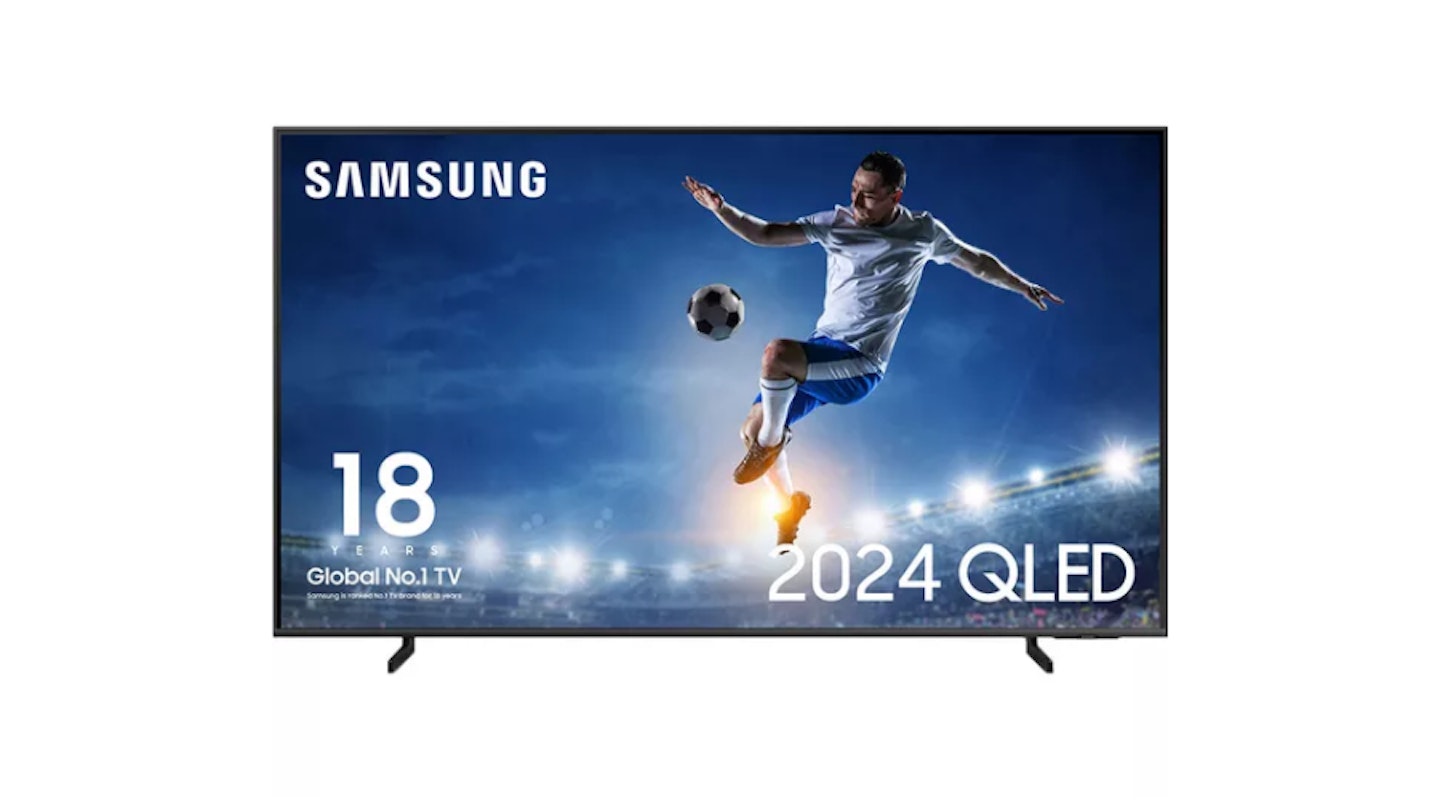 Samsung
SamsungFor true QLED screen technology, Samsung is the go-to manufacturer, and the Q60D is no lightweight with impressive visuals. This massive screen is impressive in and of itself, but when paired with the gorgeous luminance of QLED, you can hardly deny just how good it looks. QLED's billion unique shades make for life-like images, and the ultra-thin bezels truly create a picture that's difficult to tear away from.
Bolstered by a great user interface, and two built-in voice assistant choices to pick from, the Samsung Q60D feels utterly premium, and at its price, it's no wonder. Yes, this is one of the more expensive screens on our list, but it's here for good reason: QLED technology is reliable and eye-catching, and unlike a typical OLED television, you're not at a huge risk of screen burn.
As great as this screen may be, we'd love to see a 120Hz refresh rate to justify its price a little better: at 60Hz, it's a solid screen for gaming, but some extra smoothness would push the Q60D that extra mile.
For ultra-bright, gorgeously detailed picture, the Samsung Q60D is utterly fantastic, and is undeniably a contender for one of the best QLED TVs this year.
Pros
- Gorgeous QLED screen technology
- Fantastic Samsung user interface
- Terrific design
Cons
- Standard refresh rate despite price
| Screen size | 75 inches |
| Other sizes | 43, 50, 55, 65, 85 inches |
| Screen type | QLED |
| Refresh rate | 50Hz |
| HDMI ports | HDMI 2.0b x 3 |
| HDR | HDR10 |
| Audio | 20W |
| Smart assistant | Bixby, Alexa built-in |
| Dimensions | Without stand: 959.8 x 1676.6 x 26.6 mm (H x W x D) |
| Weight | With stand: 32 kg |
Best OLED TV
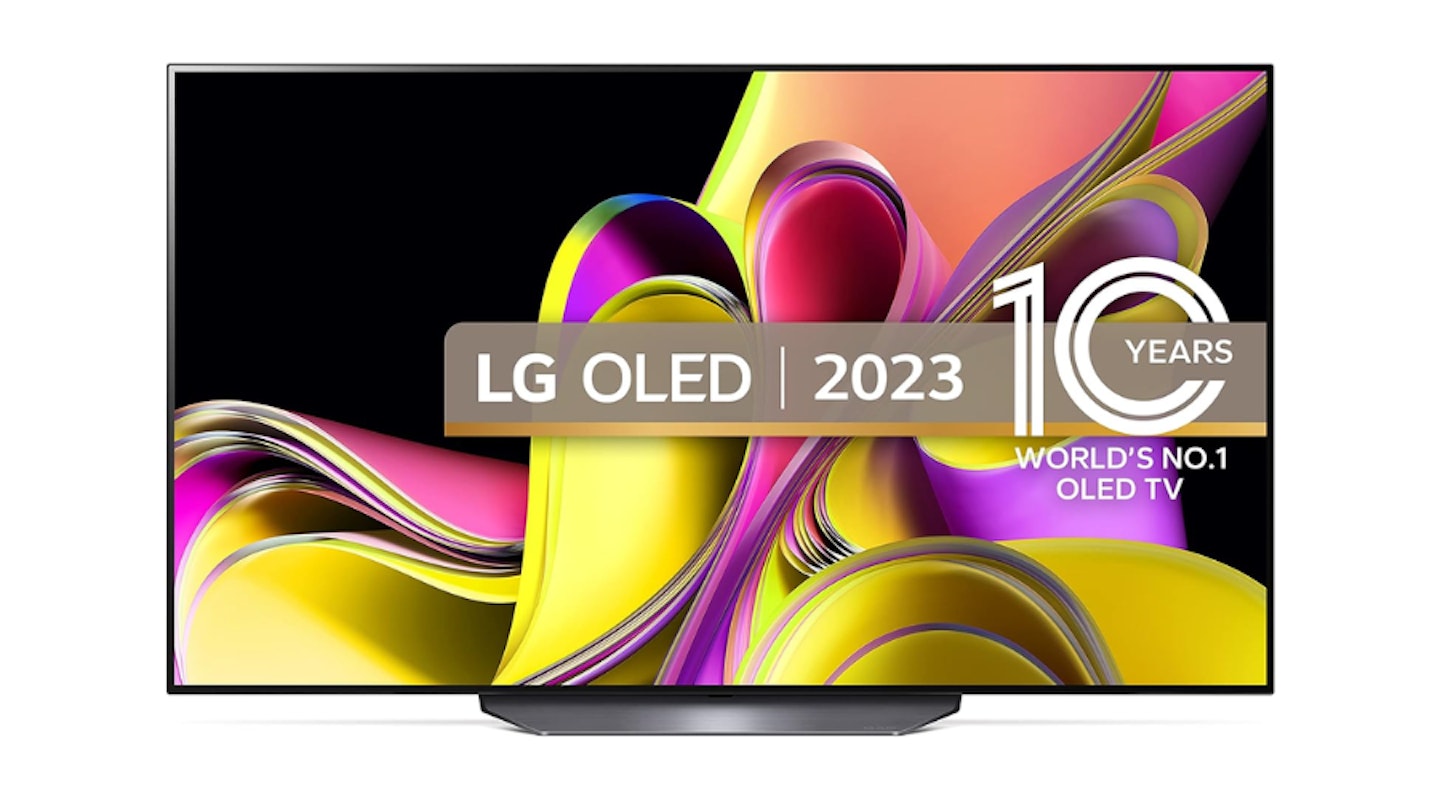 LG
LG The leading world television technology right now, LG's OLED B3 is probably one of the most technologically advanced screens on the market, and it's not just because it's ultra-thin. Utilising the cutting-edge OLED screen technology, images on the B3 have an infinite contrast ratio, meaning that the black colours are darker than they've ever been. The B3 selectively shuts of diodes on its panel in an instant, creating true black colours, which is not possible even on a QLED television.
The result is one of the best-looking cinematic experiences you can get for your home, and there's no exaggeration in saying that. This pricey television is ultra-sharp, ultra-fast and looks stunning, but there's more than meets the eye with the B3. One of its greatest strengths is its 100Hz refresh rate, giving gamers a new lease on life with ultra crisp and responsive controls, and once you've tried it, there's no going back. Countless PCs and consoles are now capable of running at up to 120Hz, so there's no better opportunity to try it out than now.
Gorgeous as this LG B3 77-inch television is, it's much more than its competition, almost £1,000 more. For all its features and gorgeous design, it's difficult to actually justify buying this television unless you're very much into cinema and gaming.
But if you've got the cash, the LG B3 77-inch television is the best OLED television for you, there's no denying it.
Pros
- Second-to-none OLED screen
- 100Hz refresh rate
- Ultra-slim profile and build
Cons
- Very expensive compared to its competition
| Screen size | 77 inches |
| Other sizes | 55, 65 inches |
| Screen type | OLED |
| Refresh rate | 100hz |
| HDMI ports | HDMI 2.1 x 4 |
| HDR | HDR10 |
| Audio | 20W |
| Smart assistant | Not specified |
| Dimensions | Without stand: 992 x 1723 x 55.3 mm (H x W x D) |
| Weight | Without stand: 26.7 kg |
How to choose the best 75-inch TV
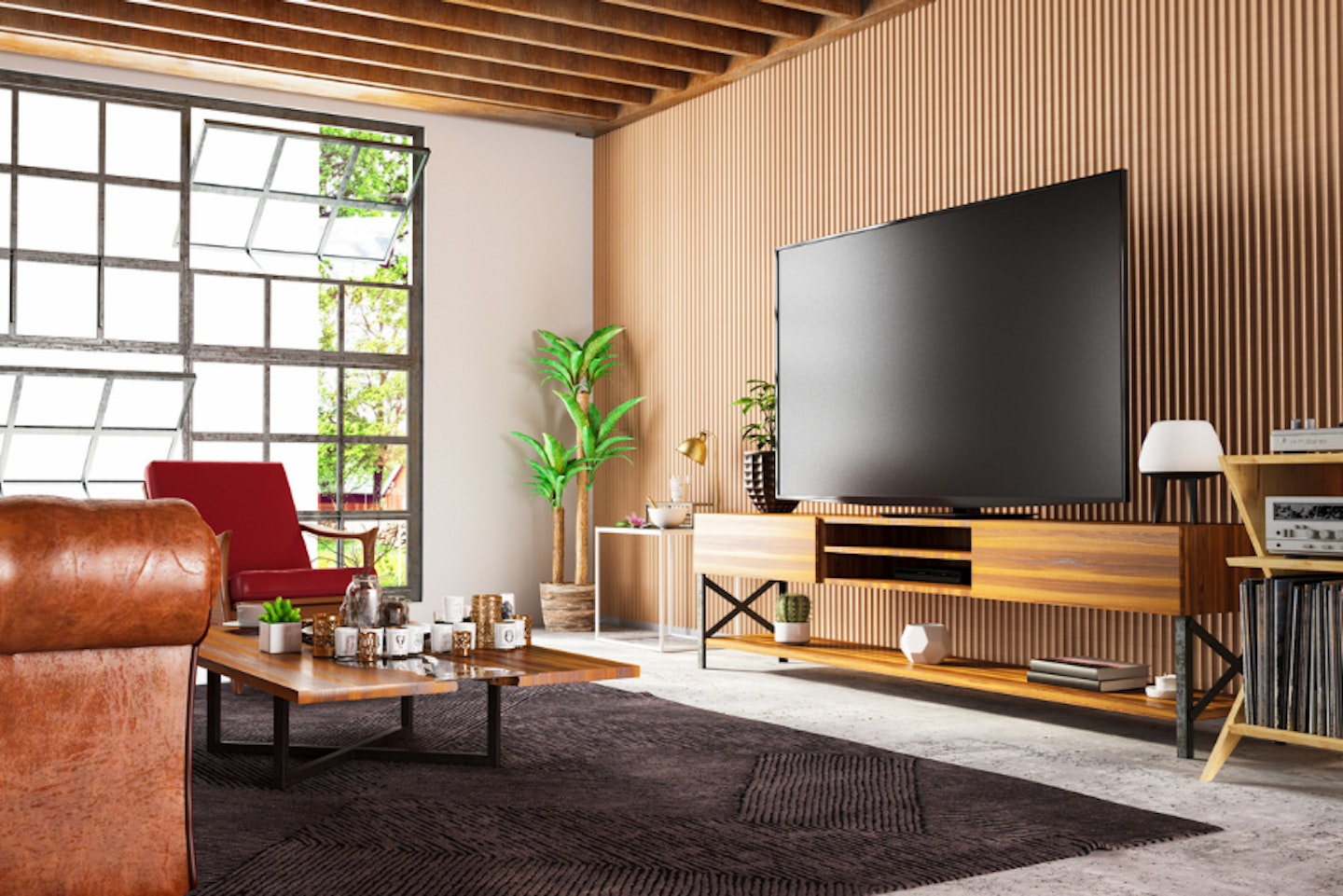
Choose the best 75-inch TV panel
It probably goes without saying that any 75-inch TV will have a 4K resolution or higher. They’re also likely to be using one of four lightweight panel types: OLED, QLED, Full Array LED, or Mini LED. While each has its pros and cons, they are equally modern display technologies. There’s a breakdown of these in our jargon-buster at the end of the article, plus some FAQs. Decide what you want from your viewing and you’ll find it hard to make a poor choice here.
Consider size and position
When it comes to your room and decor, bigger isn't always better. Okay, so you might be able to fit a 75-inch model into your living space, but will it cramp your style? Make sure that you have the room to either wall-mount a set this large or that the best TV stand you’ve found for the job will actually fit (and support the TV's weight) without causing problems.
You’ll also need to consider where you'll be sitting to watch a TV of this size. A quick rule of thumb is that you'll need to be around 12.5 feet away for comfortable viewing. If you'd like more advice on this, check out our full article on choosing the right size TV.
Guide to panel types
OLED
Organic LEDs don't require a traditional backlight to create a bright enough picture and can be controlled individually, pixel by pixel. Therefore, OLED screens don’t produce that grey-ish lighting 'bloom' around bright objects, most obviously present on standard LED screens. Also, the viewing angle of OLED panels is wider than LED. Well-suited to movie buffs and gamers; the refresh rates are high, and black levels are super-deep with excellent sharp highlights.
QLED
QLED was initially developed by Samsung but is now also offered by other manufacturers like Hisense and TCL. The 'Q' here indicates the presence of Quantum Dots instead of organic LEDs. These dots generate colours differently and the emitted light is stronger, so can produce brighter images and more intense, truer colours. But, they’re backlit separately, so control over blacks and highlights can lead to a slightly inferior contrast compared to OLED. If you're interested in finding out more, we've got a guide to the best QLED TVs.
Mini LED
Miniature LEDs (Light Emitting Diodes) also deliver a very high-resolution alternative to OLED. As you'd expect, with more densely-packed LEDs also comes the ability to finely control brightness and contrast. Local dimming zones to drive deeper and truer blacks.
Once again, the overall brightness a Mini LED panel can throw out is a little better than OLED. This makes for more accurate HDR performance. But, Mini LEDs don't have the near-infinite level of contrast that OLEDs have when turned off. So, depending on the model, you may see some light bleed between dark and light areas. The viewing angle is also significantly less than that of OLED.
Full Array LED
Whereas a standard LED screen will be backlit by rows of LEDs along its edges, a Full Array screen is backed up with a corresponding 'full array' of backlighting LEDs behind each pixel. This backlighting can be locally controlled, but it’s not as precise as OLEDs. It's a slightly cheaper but excellent alternative technology to those above, which delivers a good qualitative balance between colour, brightness, contrast and resolution without necessarily beating the performance of other panels in each of those areas.
HDR and UHD
HDR stands for High Dynamic Range. This works to get as much light, detail and depth into the colour range of your picture. Whites are brighter, blacks are blacker, and it delivers a massive range of over one billion colours. HDR10+ is the same, but slightly extended range-wise, thanks to the transfer of extra metadata between the source and the TV itself. HDR comes in slightly different flavours though – with HDR (HDR10), HDR10+, and Dolby Vision being close cousins; each has a slight improvement over the other.
Ultra High Definition, or UHD, is really another term for 4K. A 4K picture is roughly four times the size of the last generation of 'HD' screens (commonly made up of 1920 x 1080 pixels).
HDMI 2.1
HDMI 2.1 is a digital connection that is capable of carrying both sound and picture information; With enough bandwidth to support higher resolutions and refresh rates. Namely, 4K UHD at 120fps and 8K UHD at 60fps.
For most, this won’t be relevant, but gamers, in particular, will want to pay attention to this feature. Only with HDMI 2.1 connection will the Xbox Series X and PlayStation 5 be able to fully flex their might.
Refresh rate and VRR
This is the number of times the screen refreshes the entire displayed image, per second. Measured in Hertz (Hz) a 60Hz TV will refresh an image 60 times, and a 120Hz TV will refresh an image 120 times. Therefore, the higher the refresh rate, the smoother the moving image appears to the eye. This is particularly important for gamers or those who watch fast-moving action like sports.
VRR, or variable refresh rate, also provides a huge boost for gamers. Often supported in various ways (such as Nvidia’s G-Sync, and AMDs FreeSync technologies) this means the TV will actively monitor the content that’s being displayed and vary the screen's refresh rate accordingly. This makes for even smoother and more detailed motion depending on the scene or movement of your game - especially when viewed on one of the best 75-inch TVs.
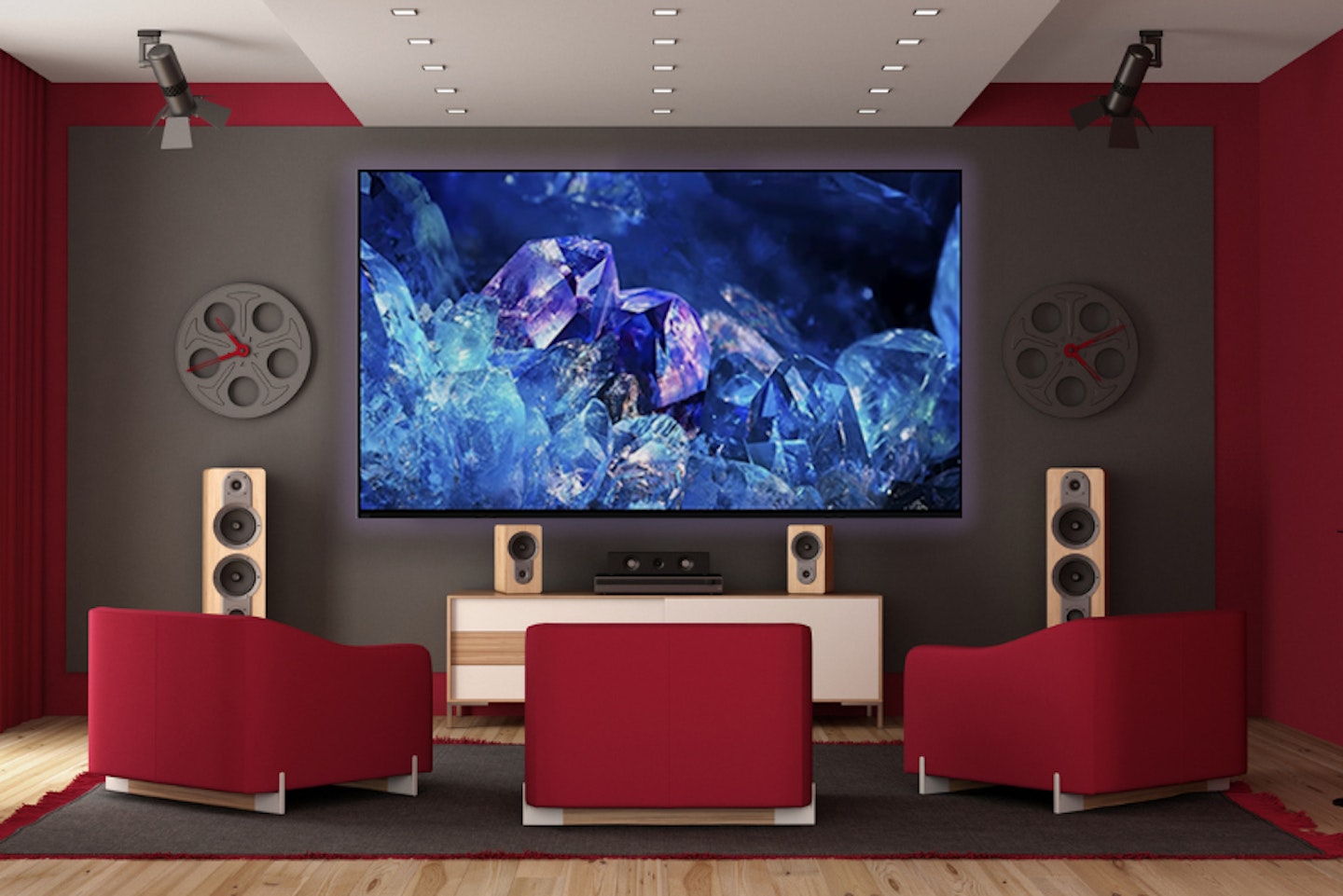
FAQs
Do 75-inch TVs cost a lot to run?
Even premium brands – such as the best Sony TVs – can only achieve so much energy efficiency while maintaining quality output. As you'd expect, the sheer size of the panel itself is always going to mean higher consumption than a 50-inch TV or smaller. But, the good news is that running costs are always going to be in a similar ballpark - most TVs are 50-inch or larger these days and so you’re unlikely to notice much of a difference in your energy bill, as the amount of circuitry that drives the panel is more or less the same from model to model. If you're concerned with power consumption, it's best to look at the official energy label for the TV and go from there.
What size TV do I need?
As you’re reading this article, you’ve probably been seriously considering getting a very large set. But, as mentioned earlier, you'll need to factor in your viewing distance before you splash any cash. Here's a ballpark guide to minimum viewing distances for HD or 4K content based on screen size:
40 inches – 80 inches (6.7 feet)
50 inches – 100 inches (8.3 feet)
60 inches – 120 inches (10 feet)
75 inches – 150 inches (12.5 feet)
What size is a 75-inch TV?
Surely it's 75 inches across, right? Well, firstly screen sizes are normally measured diagonally from corner to corner. Therefore you can expect the horizontal width of your chosen TV to be less than 75 inches. So, what are the dimensions of a 75-inch TV? Well, it will vary. The diagonal measurement is usually the visible part of the panel and doesn’t include any bezel around the screen. If you're concerned with getting an exact fit with your available space, always read the technical specification for the TV for exact dimensions; and remember: some of the dimensions will be listed with or without the stand fitted. Of the 75-inch choices we've listed above, the Hisense 75E7KQTUK PRO comes out on top.
Chris Duffill is a Senior Tech Writer and Reviewer for What's The Best. His background includes writing, editorial, marketing, design, video production and photography.
He specialises in home entertainment and audiovisual tech, including speakers, amplifiers, turntables, streaming media players, and TVs. He is also one of our resident experts in computing (PCs, tablets, smartphones, smartwatches), DSLR photography and all kinds of digital cameras. He also writes about retro gaming, game consoles and various electronic gadgets. If it plugs in, lights up or makes a noise, he'll write about it.
